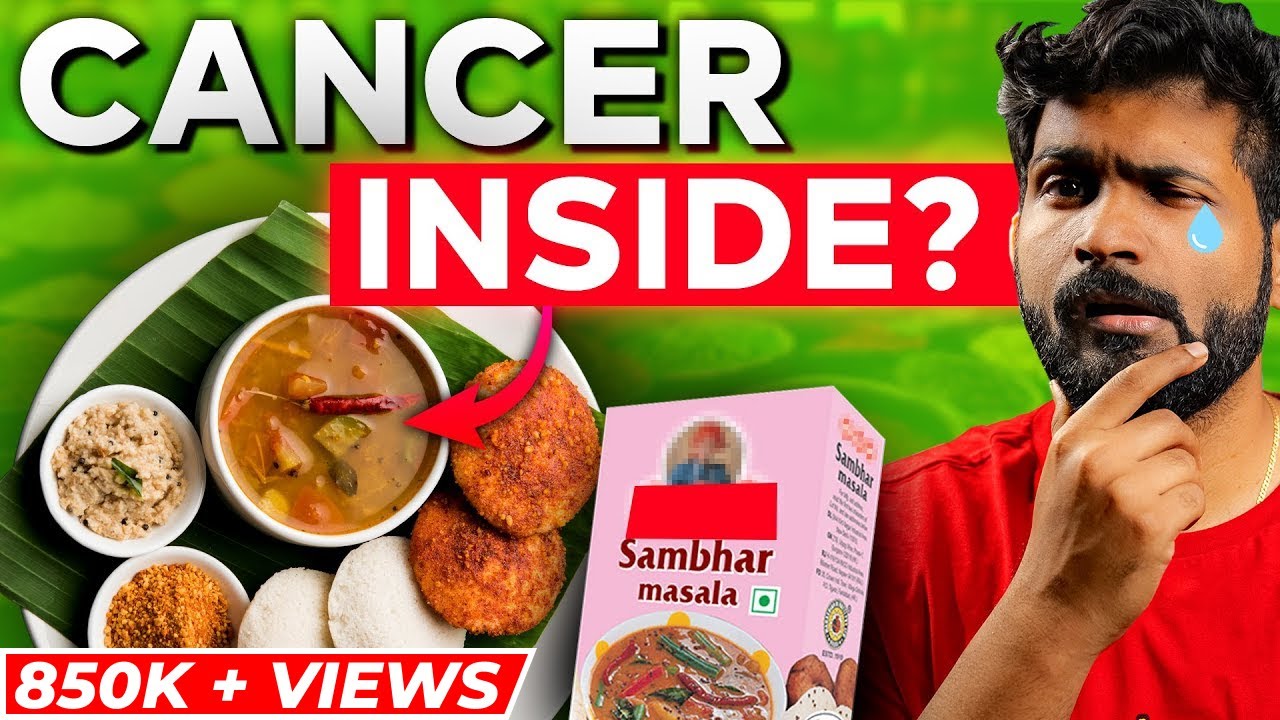Healthy or junk food? Busting food labels (CBC Marketplace)
Summary
TLDRThe video script explores the misleading food labeling practices in the grocery industry. It features Tom and Erica investigating popular food products like Nutella, Campbell's Healthy Request soup, Dempster's Garden Vegetable bread, and Kraft Dinner Smart, revealing the high sugar, salt, and processed content contrary to their 'healthy' claims. They consult Dr. Yoni Freedhoff, a nutritional watchdog, who exposes the truth behind these products and criticizes companies for exploiting consumer psychology. The script concludes with a call for honest labeling and consumer education.
Takeaways
- 🍞 'Healthy Request' soups are not as healthy as they sound, with high sodium content that can be misleading due to the serving size being less than the whole container.
- 🥜 Nutella, despite being marketed as a breakfast food, is high in sugar, with one serving containing almost 3 teaspoons of sugar.
- 🥪 Dempster's Garden Vegetable bread suggests it contains a significant amount of vegetables, but in reality, it provides only a small fraction of a carrot's worth of nutrients.
- 🍪 '100% fruit' bars can be deceptive, as they may contain as much sugar as several Oreo cookies but with minimal vitamins.
- 🍝 KD Smart products are marketed as healthier alternatives, but they don't necessarily provide significant nutritional benefits compared to regular Kraft Dinner.
- 💰 Companies use clever marketing to convince consumers that their products are healthier, even when the nutritional benefits are minimal or misleading.
- 👨⚕️ Dr. Yoni Freedhoff, a nutritional watchdog, suggests that the government should take more responsibility to ensure food labels are not misleading.
- 🛒 Shoppers are often misled by food labels and may not realize the actual nutritional content of the products they purchase.
- 📉 The script highlights a need for consumers to be more educated about reading and understanding food labels to make healthier choices.
- 📉 The script also emphasizes the importance of transparency and honesty in food labeling, calling for changes in both industry practices and government regulations.
Q & A
What is the main focus of the discussion between Tom and Erica in the grocery store?
-The main focus is to investigate whether companies are using misleading marketing tactics on food labels to convince consumers that their products are healthier than they actually are.
What does Erica think about the 'Healthy Request' label on food products?
-Erica is skeptical about the 'Healthy Request' label, as she believes it might be misleading and does not necessarily reflect the actual nutritional value of the product.
What is Dr. Yoni Freedhoff's opinion on food marketing tactics?
-Dr. Yoni Freedhoff, referred to as Canada's nutritional watchdog, believes that companies use every possible tactic to convince consumers that their products are healthy, preying on people's psychology and beliefs.
How does the script describe Nutella?
-The script describes Nutella as 'spreadable candy' with a high sugar content, suggesting that despite its popularity as a breakfast item, it is not a healthy choice to start the day.
What is the actual amount of sugar in a single serving of Nutella?
-A single serving of Nutella, which is one tablespoon, contains 11 grams of sugar, which is almost equivalent to 3 teaspoons of sugar.
What comparison does the script make between Nutella and chocolate icing?
-The script reveals that there is less sugar, tablespoon for tablespoon, in chocolate icing than in Nutella, challenging the perception of Nutella as a healthier option.
What issue does the script raise about Campbell's Healthy Request soup?
-The script raises the issue of sodium content and misleading serving sizes on the label of Campbell's Healthy Request soup. It suggests that the actual amount of sodium in the whole container is much higher than what is advertised per serving.
What does the script suggest about Dempster's Garden Vegetable bread?
-The script suggests that Dempster's Garden Vegetable bread is misleading because despite having a label covered in carrots, it contains very little actual vegetable content and the nutritional value is significantly reduced after processing.
How does the script portray the '100% fruit bars' from Sun Rype?
-The script portrays the '100% fruit bars' as high in sugar, equating a single bar's sugar content to that of six-and-a-half Oreo cookies, thus challenging the idea that these bars are a healthy choice.
What is the script's stance on Kraft Dinner Smart products?
-The script is critical of Kraft Dinner Smart products, stating that they are not as healthy as they claim to be. It points out that to get the same health benefits as from natural sources, one would have to consume unreasonably large quantities of the product.
What does the script suggest should be done about misleading food labels?
-The script suggests that the government should take more responsibility to ensure that food labels are not misleading and that consumers should be more educated or demand more transparency from food manufacturers.
Outlines

Dieser Bereich ist nur für Premium-Benutzer verfügbar. Bitte führen Sie ein Upgrade durch, um auf diesen Abschnitt zuzugreifen.
Upgrade durchführenMindmap

Dieser Bereich ist nur für Premium-Benutzer verfügbar. Bitte führen Sie ein Upgrade durch, um auf diesen Abschnitt zuzugreifen.
Upgrade durchführenKeywords

Dieser Bereich ist nur für Premium-Benutzer verfügbar. Bitte führen Sie ein Upgrade durch, um auf diesen Abschnitt zuzugreifen.
Upgrade durchführenHighlights

Dieser Bereich ist nur für Premium-Benutzer verfügbar. Bitte führen Sie ein Upgrade durch, um auf diesen Abschnitt zuzugreifen.
Upgrade durchführenTranscripts

Dieser Bereich ist nur für Premium-Benutzer verfügbar. Bitte führen Sie ein Upgrade durch, um auf diesen Abschnitt zuzugreifen.
Upgrade durchführenWeitere ähnliche Videos ansehen

Pemalsuan Produk Pangan (Food Fraud)

EXPOSING Food Items You Consume Daily - Revant On Bournvita Controversy & Scams | FO126 Raj Shamani

Indian food is dangerous | Why Singapore BANNED Indian spices | Abhi and Niyu

Food Labels and Portion Size (NS2)

We Sued the Packaged Food Industry! Here’s What Happened...

O que é o BRC ?
5.0 / 5 (0 votes)
